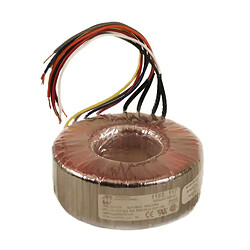I’m going to try to explain this without getting too technical, and without trying to sell you anything.
DC power supplies have a job, and that job is to convert AC power (your wall) to DC power (what electronics usually need).
Both linear and switching power supplies do that task, but they accomplish it in using different methods.
The biggest “technical” difference is that linear power supplies use a large power transformer to do that conversion, and switching power supplies do not (they use more advanced circuitry that only became reasonable in the 1970s). I digress into these technical details only to serve as an anchor to your second question which I address at the end of this post.
The “linear solution” is nice because it’s a very clean (low noise) solution, but it’s expensive, heavy, and very inefficient (input power is converted to heat and not output power).
The “switching solution” results in an inexpensive, lightweight, and very efficient power supply. It also produces less clean (more noise) electricity.
Switching pretty much won over the world in the last 40 years, and it’s why everyone piece of consumer electronics has a little wall wart or tiny PSU inside the unit.
Nowadays, linear power supplies tend to be used where the noise from electricity could impact the device it is powering. For example, if your device had a high sensitivity sensor, the noise from the electricity could interfere with the operation of that sensor by introducing noise into the sensor’s output signal. If the sensor is critical to the operation of the device, using a noisy power supply could render the entire purpose of the device moot.
In audio, the digital-to-analog conversion and amplification are analog processes that could potentially be impacted by electrical noise. The rationale is that linear power supplies are “better” for powering these types of audio processes. There are things you to do to make them less susceptible to noise, but most proponents will just want to avoid the noise in the first place.
In modern times, switching power supply technology has become quite noise-free, while maintaining the many other benefits of a switching power supply (efficiency and size, but not cost). Many audio manufacturers, including high-end brands (like dCS) have been able to achieve noise levels equal or better than even traditional linear power supplies while maintaining efficiency and size. Note that there are still a ton of really noisy switching power supplies out there still, but the story today is not quite as clear as “linear clean” vs “switching dirty”.
It’s also worth noting that many linear power supplies out there, like the ones you can get inexpensively on AliExpress and eBay, are often poor quality. They are preying upon those who demand “linear”.
How much does all this impact your sound? That is highly subjective.
They often look the same, but if you look under the hood, you will see large power transformers that will sometimes look like this:
 and seriously doubt it. Let us see if someone chips in with a good explanation…
and seriously doubt it. Let us see if someone chips in with a good explanation…
